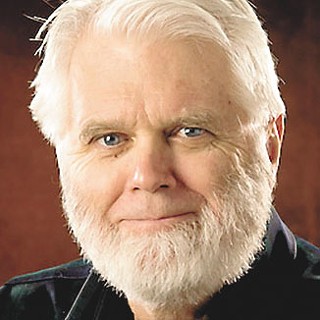Ban The Billboard
[
{
"name": "Broadstreet - Instory",
"insertPoint": "5",
"component": "25846487",
"requiredCountToDisplay": "5"
},{
"name": "Broadstreet - Instory",
"insertPoint": "10",
"component": "25846487",
"requiredCountToDisplay": "10"
},{
"name": "Broadstreet - Instory",
"insertPoint": "15",
"component": "25846487",
"requiredCountToDisplay": "15"
},{
"name": "Broadstreet - Instory",
"insertPoint": "20",
"component": "25846487",
"requiredCountToDisplay": "20"
}
]
by Robert Herold
Instructed by the many billboard regulation and removal initiatives that are succeeding at reducing visual clutter in cities and counties across the country, our county commissioners -- two of them anyway -- have agreed on a course of action. In 1999, they voted to "prohibit the construction or installation" of any new billboards within the unincorporated areas. They also propose, through an amortization process that has been successfully used in other communities, eventually to remove billboards "adjacent to county roads, and not subject to the state Scenic Vistas Act" (an act which, ironically, protects all the gawdawful billboards along state highways such as Highway 2, aka Division Street). They seek voter input through an advisory referendum, Proposition 2.
The "industry" is out to stop any and all efforts to carry out this (or any other) plan. Voters are being warned, via (surprise!) a billboard campaign, that property rights are being attacked. Worse yet, that taxes will be lost.
Nonsense.
Charging that government wages war on property rights through regulation and amortization makes about as much sense as asserting that by prohibiting the operation of adult book stores in the vicinity of schools, government has waged war on property rights.
Nor do the commissioners attack advertising as a medium. They seek to address problems created by a single, notoriously invasive, advertising format. Invasive forms of advertising have long been a target of representative government. We don't permit advertisers to blare messages over amplified loudspeakers. We regulate for "noise pollution." Or consider the most recent form of invasive advertising, telemarketing. A fed-up public, so annoyed by having dinner hours invaded, now demands that government take action. And, slowly, it has.
Our local governments make the case that invasive visual clutter is bad for the public's health and welfare (and safety, too). Both city and county comprehensive plans support this idea, as do most urbanists and architects across the country.
The industry counters with the claim that billboards are good for the economy. The facts are to the contrary. If billboards were bad for economies, we would not expect to find billboards under siege in affluent communities. But we do. Affluent communities and, even more to the point, many less affluent communities that aspire to a higher standard of living, seek to avoid sending visual messages that admit to civic bad taste and lack of self-respect. They know that visual clutter fairly shouts: "We're bush league, and damn proud of it."
Until recently, the primary source of billboard revenue was actually generated not by local "Mom and Pop" businesses, but by beer and cigarette advertising. No more, say the billboard people. "We have reformed," so they claim.
They didn't reform; they were caught and defeated.
And that's just the point. This is an industry that knows no self-restraint. Never has. When have the billboard people ever been willing to consider a set of criteria to address the problems caused by visual clutter? They already have their preferred criterion: it's called "the bottom line." They demand the right to build anywhere they can find a space and gain approval, to build billboards as large as possible. They refuse even to discuss the possibility that there may be an important visual distinction to be drawn between those delightful Burma Shave signs of yesteryear and the huge doublewide monstrosities that have today become standard issue.
They claim to be concerned with the public good; but for more than a decade, whenever discussions about the need for moratoriums rise to the point of proposal, they disingenuously rush through a mountain of billboard permit applications. Once approved, of course, further discussion of the issue is moot. Behind this veil of disingenuousness, they meet all attempts to address the issue, followed closely by threat of lawsuit (which they won't win, as many a community has shown).
Economic development is only one reason to support billboard regulation and removal -- but it is an important reason. That our economically challenged community has allowed itself to be held hostage to a narrow interest group says a lot. More disappointing are our business leaders who could make a difference, but who just won't break ranks, even when they know better.
We read reports of visitors who come to town and are appalled by the dismal condition of our streets. Do we not realize that they view our bad roads as an indication of deeper community malaise? And then, as if our roads aren't bad enough, we confront them with our cacophony of visual clutter. Taken together, their image of Spokane as a backwater dump of a place becomes fixed. Don't we understand this yet?
Vote yes on Proposition Two.
A Note on Last Week's Column:
In response to concerns expressed by some readers about "Dingleworthy for Judge": I certainly did not intend to impugn anyone's qualifications for District Judge. Rather, I was taking issue with the process itself. John Rodgers and Patti Walker -- and Donna Wilson, who I also mentioned -- merely served to illustrate. I could just as easily have referred to the Supreme Court races.
Consider the Fairhurst-Johnson race. Mary Fairhurst, who, according to polling data, is a finalist because so many people actually did vote for a woman, lets us know that she comes from "a large family." Her opponent, Jim Johnson, runs as "the people's attorney." The point is that elections should be about issues, ideas and character. But when it comes to judges, we hold pseudo-political events that systemically rest on name-dropping, testimonials and vacuous claims. I argue for appointing our judges.
Instructed by the many billboard regulation and removal initiatives that are succeeding at reducing visual clutter in cities and counties across the country, our county commissioners -- two of them anyway -- have agreed on a course of action. In 1999, they voted to "prohibit the construction or installation" of any new billboards within the unincorporated areas. They also propose, through an amortization process that has been successfully used in other communities, eventually to remove billboards "adjacent to county roads, and not subject to the state Scenic Vistas Act" (an act which, ironically, protects all the gawdawful billboards along state highways such as Highway 2, aka Division Street). They seek voter input through an advisory referendum, Proposition 2.
The "industry" is out to stop any and all efforts to carry out this (or any other) plan. Voters are being warned, via (surprise!) a billboard campaign, that property rights are being attacked. Worse yet, that taxes will be lost.
Nonsense.
Charging that government wages war on property rights through regulation and amortization makes about as much sense as asserting that by prohibiting the operation of adult book stores in the vicinity of schools, government has waged war on property rights.
Nor do the commissioners attack advertising as a medium. They seek to address problems created by a single, notoriously invasive, advertising format. Invasive forms of advertising have long been a target of representative government. We don't permit advertisers to blare messages over amplified loudspeakers. We regulate for "noise pollution." Or consider the most recent form of invasive advertising, telemarketing. A fed-up public, so annoyed by having dinner hours invaded, now demands that government take action. And, slowly, it has.
Our local governments make the case that invasive visual clutter is bad for the public's health and welfare (and safety, too). Both city and county comprehensive plans support this idea, as do most urbanists and architects across the country.
The industry counters with the claim that billboards are good for the economy. The facts are to the contrary. If billboards were bad for economies, we would not expect to find billboards under siege in affluent communities. But we do. Affluent communities and, even more to the point, many less affluent communities that aspire to a higher standard of living, seek to avoid sending visual messages that admit to civic bad taste and lack of self-respect. They know that visual clutter fairly shouts: "We're bush league, and damn proud of it."
Until recently, the primary source of billboard revenue was actually generated not by local "Mom and Pop" businesses, but by beer and cigarette advertising. No more, say the billboard people. "We have reformed," so they claim.
They didn't reform; they were caught and defeated.
And that's just the point. This is an industry that knows no self-restraint. Never has. When have the billboard people ever been willing to consider a set of criteria to address the problems caused by visual clutter? They already have their preferred criterion: it's called "the bottom line." They demand the right to build anywhere they can find a space and gain approval, to build billboards as large as possible. They refuse even to discuss the possibility that there may be an important visual distinction to be drawn between those delightful Burma Shave signs of yesteryear and the huge doublewide monstrosities that have today become standard issue.
They claim to be concerned with the public good; but for more than a decade, whenever discussions about the need for moratoriums rise to the point of proposal, they disingenuously rush through a mountain of billboard permit applications. Once approved, of course, further discussion of the issue is moot. Behind this veil of disingenuousness, they meet all attempts to address the issue, followed closely by threat of lawsuit (which they won't win, as many a community has shown).
Economic development is only one reason to support billboard regulation and removal -- but it is an important reason. That our economically challenged community has allowed itself to be held hostage to a narrow interest group says a lot. More disappointing are our business leaders who could make a difference, but who just won't break ranks, even when they know better.
We read reports of visitors who come to town and are appalled by the dismal condition of our streets. Do we not realize that they view our bad roads as an indication of deeper community malaise? And then, as if our roads aren't bad enough, we confront them with our cacophony of visual clutter. Taken together, their image of Spokane as a backwater dump of a place becomes fixed. Don't we understand this yet?
Vote yes on Proposition Two.
A Note on Last Week's Column:
In response to concerns expressed by some readers about "Dingleworthy for Judge": I certainly did not intend to impugn anyone's qualifications for District Judge. Rather, I was taking issue with the process itself. John Rodgers and Patti Walker -- and Donna Wilson, who I also mentioned -- merely served to illustrate. I could just as easily have referred to the Supreme Court races.
Consider the Fairhurst-Johnson race. Mary Fairhurst, who, according to polling data, is a finalist because so many people actually did vote for a woman, lets us know that she comes from "a large family." Her opponent, Jim Johnson, runs as "the people's attorney." The point is that elections should be about issues, ideas and character. But when it comes to judges, we hold pseudo-political events that systemically rest on name-dropping, testimonials and vacuous claims. I argue for appointing our judges.



















